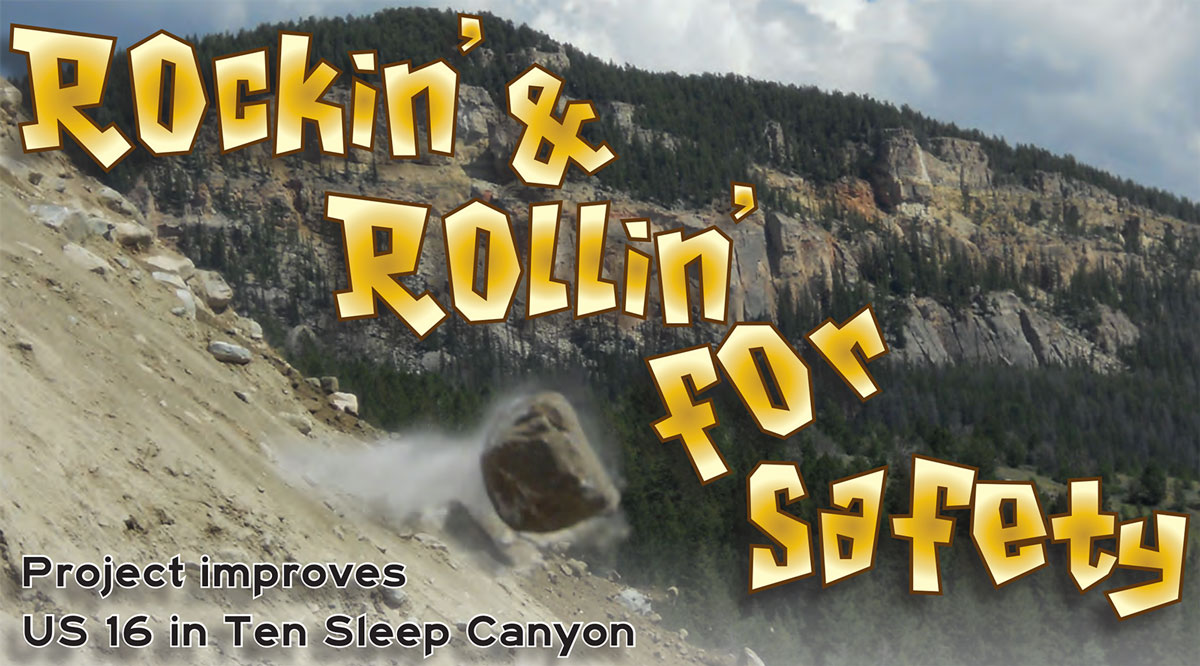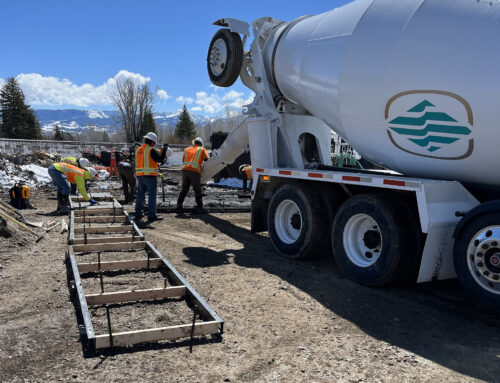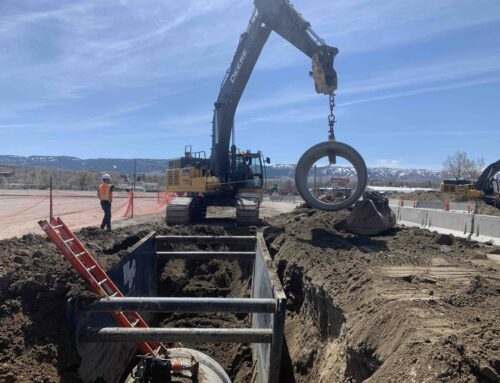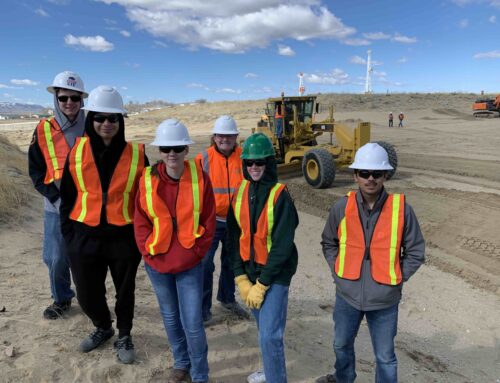Bruce Burrows
Project improves US 16 in Ten Sleep Canyon
US 16 in the Big Horn Mountains of northern Wyoming is rated by many as one of Wyoming’s most scenic highways. En route from Buffalo to Worland, the route traverses a number of thickly forested drainages before approaching tree line at 9,666- foot Powder River Pass. Next, the road winds down into the Big Horn Basin via Ten Sleep Canyon, affording a plethora of eye pleasing vistas for tourists and resident travelers alike.
Amid the beauty, however, the alpine terrain along one quarter-mile stretch in the upper reaches of the canyon had for years presented a very real and present hazard to the motoring public. The problem traced back to a steep cut slope, just north of milepost 42. Just above the cut slope was a substantial rocky area punctuated by numerous large boulders perched precariously on the hillside. The upslope was the source of a persistent rock fall problem that had plagued WYDOT maintenance crews for decades. The boulders, some measuring as much as 20 feet in diameter, were prone to dislodging, particularly during wet weather, then tumbling down onto or adjacent to the highway. The result was frequent damage to the road surface and adjoining concrete barrier, not to mention an ever present danger to passersby.
But now, thanks to a reconstruction project undertaken in the canyon by Casper-based Oftedal Construction over the past several months, the US 16 maintenance and safety problem is largely a thing of the past.
“This road section has been an ongoing maintenance headache and safety problem. We’ve used jersey barrier at this site for years to try to restrain the rock fall from reaching the roadway,” said Dan McAfee, WYDOT’s resident engineer in Worland. “We’ve remedied that by taking the big boulders out, moving about 350,000 cubic yards of material in order to lay this slope back and making it safer so we won’t have the rock fall hazard we’ve experienced in the past.”
The 2.3-mile project area is located immediately south of the Big HornWashakie county line, just below Meadowlark Lake. For most of the project corridor (mileposts 41.7-44), US 16 runs through the confines of the canyon, pinned between the banks of fast-flowing Ten Sleep Creek on one side and the often steep hill side on the other.
The reconstruction includes widening the road from 26 feet across (two travel lanes with minimal shoulders) to 36 feet, enough to add six-foot shoulders on each side. Because of the tight terrain, three retaining walls, together totaling about a half-mile in length, have been built to accommodate the wider road and minimize impacts to the creek.
The reconstruction work began this spring and continued at an accelerated pace this summer in order to make the most of the relatively short construction season in the project area, which tops out above 8,000 feet in elevation.
Highly skilled equipment operators were required for the rock excavation. They had to be adept at first excavating the boulders and then moving them to a point where they could be shoved off the embankment in a controlled manner to avoid endangering other machinery or passing traffic, according to WYDOT project engineer Bryan Strasser, also with the Worland crew
“From the top of the cut, at one point, they were dropping them down vertically about 100 feet,” Strasser added. “The big rocks came down with a thunderous crash, but Oftedal’s crew did a really good job of keeping it safe, and when a boulder rolled out onto the roadbed, they were ready to promptly remove it so traffic could resume.”
Most of the work has been undertaken during daylight hours, with traveler delays limited to 15 minutes or less. Oftedal’s contract carries a partial completion date of Oct. 31, for all work except the chip seal and reclamation. Those final tasks are scheduled to be completed by next June.
The project also includes replacing a large culvert which carries East Ten Sleep Creek under the highway about midway through the project area. Silt dredged from Meadowlark Lake last fall will be used as a source for topsoil needed to reseed side slopes along the new highway. In addition, a one-acre wetland is being developed along the shore of the lake to serve as mitigation for any wetlands disturbed during construction.
Author – Bruce Burrows

A boulder of giant-sized proportion tumbled down the slope to crush the jersey barrier on US 16 prior to this year’s reconstruction, widening and rock-fall hazard removal project.

Bulldozers work in tandem at dislodging boulders from the slope. Once at the bottom, the boulders are moved by dump trucks to an area south of the project.

Earth-moving machines charged with moving nearly 350,000 cubic yards of rock and dirt are creating a safer US 16 through Ten Sleep Canyon.






